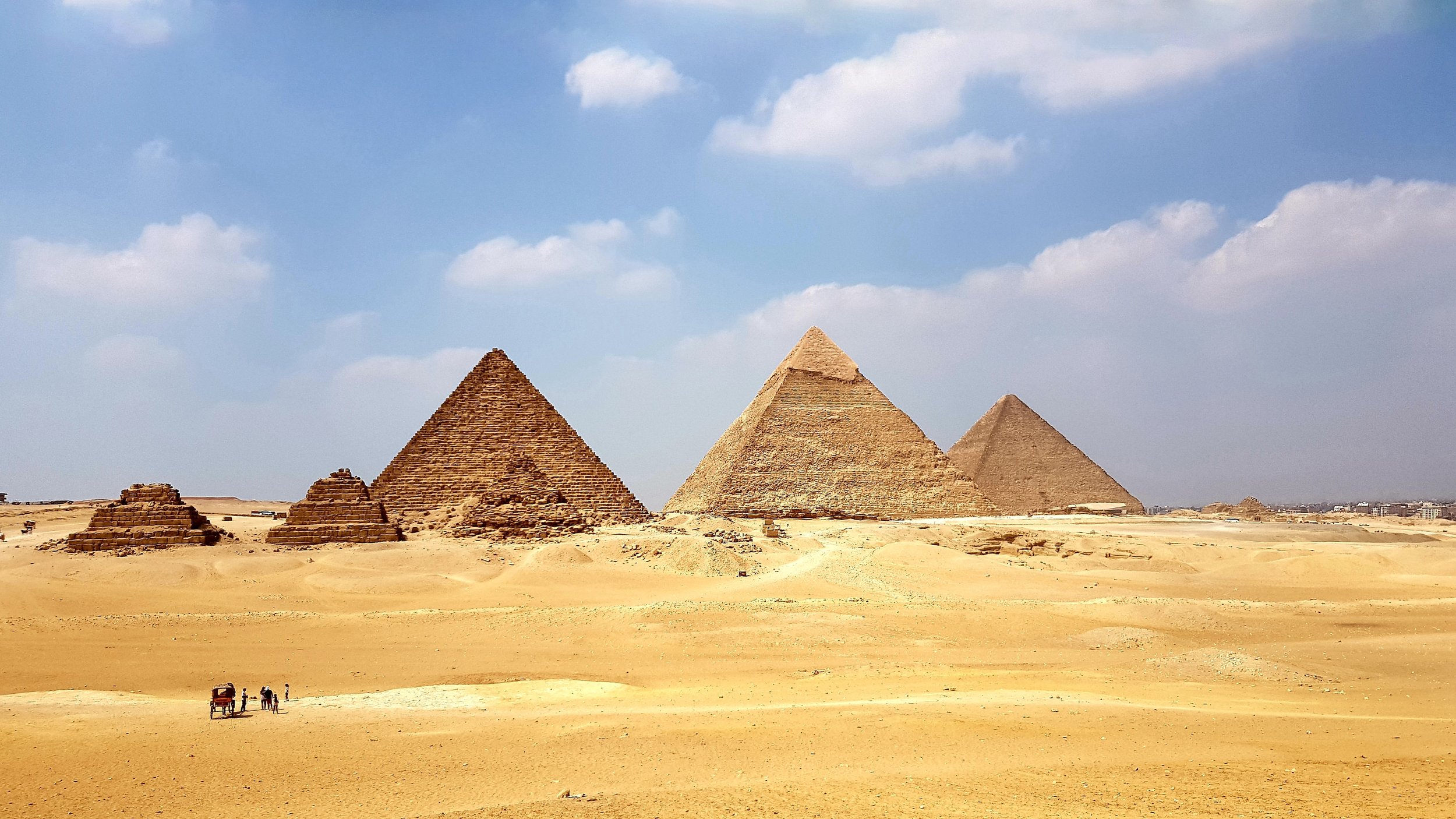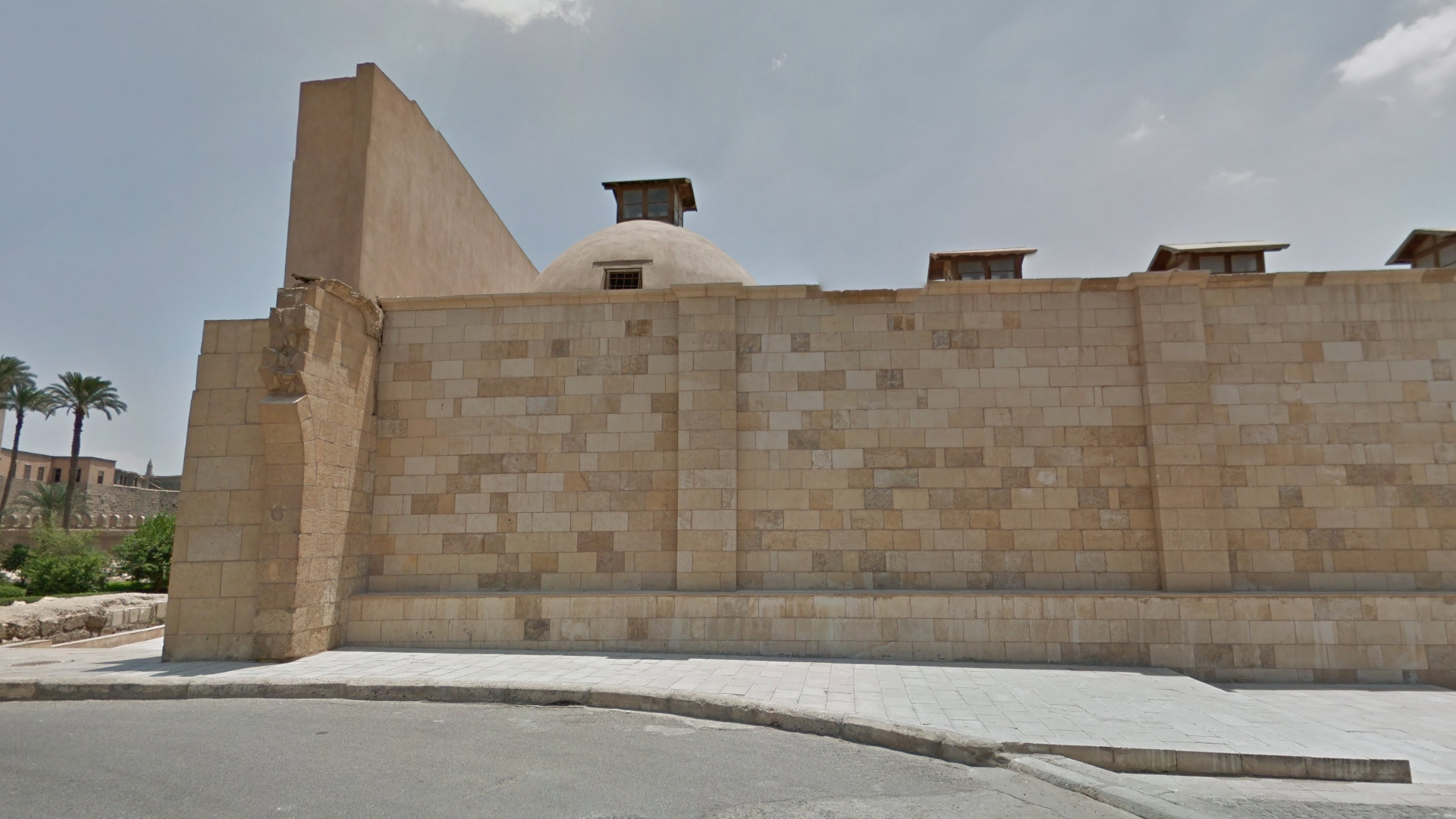
Egypt
Egypt has very sparse coverage. The entirety of the coverage is in Generation 3, made with a trekker camera. Trekkers can be recognized by the fact that the camera is lower to the ground, having smaller blurs, and no car shadow.
Instead of learning a lot of country-specific clues, it is more practical to simply memorise what the trekkers look like. There are seven sections of coverage, each centred around historic places of interest, ranging from the Pyramids to Coptic churches and medieval citadels.
The coverage is limited to two general areas:
Cairo: four trekkers.
Alexandria: three trekkers, two of which are fairly far outside the city to its southwest (Monastery of Saint Mina and nearby archeological excavations).
The great pyramids of Giza have trekker coverage
NOTE: This is not to be confused with the pyramid in Memphis, which is made of glass instead of sand stone.
The Djoser pyramid, which can be recognised by the stair-like sections combined with the scaffolding surrounding it, is located south of Cairo. You can also find some other minor historical excavation sites and some plain desert coverage.
Inside the Citadel, you can see the Ottoman-era Mosque of Muhammad Ali. It has light grey domes and very tall minarets.
NOTE: This mosque looks superficially similar to the Hagia Sophia mosque in Istanbul.
The trekker in and around the Hanging Church consists of two parts that look fairly different from each other.
Outside the church, the trekker is walking around a normal urban Cairo street. At most points, you will still see the church complex, its spires with crosses, and historic sandstone walls. But you will also see apartment buildings, shops, and normal pedestrian traffic.
This trekker can be found just east of Giza, near the map label Fustat.
The Abu Mena Heritage Site is a major excavation area southwest of Alexandria, just south of the Saint Mina monastery. In the middle of the site, you can find a small, yellow wooden chapel.
In addition, here are some resources to help you practise Egypt:
Plonk It Egypt (map link) - This map contains locations for practising each meta in the Plonk It Egypt guide from step 2.1 to 2.2














